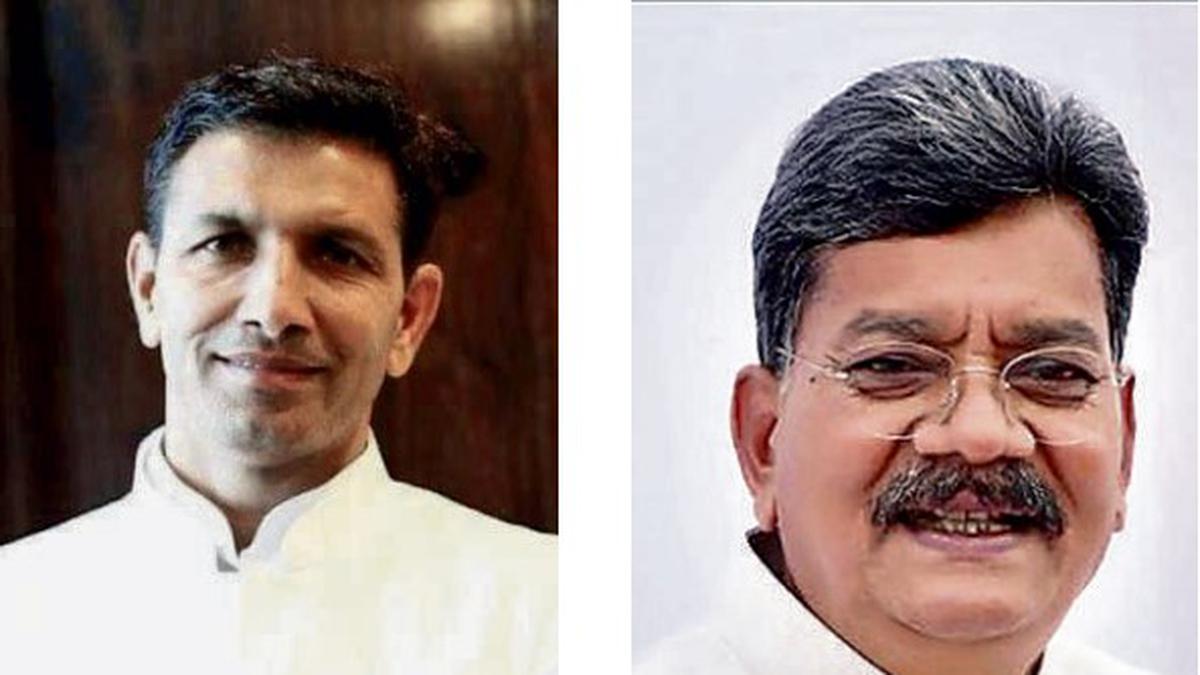
Kamal Nath removed as Madhya Pradesh Congress chief
The Hindu
AICC president Mallikarjun Kharge replaces Kamal Nath with Jitu Patwari as MP Congress chief and Charan Das Mahant as Chhattisgarh leader. OBC consolidation in BJP countered by Congress. Rajasthan next.
Days after the debacle in Madhya Pradesh and Chhattisgarh Assembly elections, All India Congress Committee (AICC) president Mallikarjun Kharge on December 16 replaced Kamal Nath with Jitu Patwari as the MP Congress chief and named former Speaker Charan Das Mahant as the leader of the legislature party in Chhattisgarh instead of former Chief Minister Bhupesh Baghel.
The change of leadership in these States is being seen as enforcing a system of accountability as the Congress was considered a favourite to win Madhya Pradesh and expected to repeat in Chhattisgarh.
In Madhya Pradesh, MLA Umang Singhar has been appointed as the Congress Legislature Party (CLP) leader in Madhya Pradesh Assembly, while MLA Hemant Katare will be the deputy leader.
“The party appreciates the contributions of outgoing PCC president, Shri Kamal Nath,” an AICC order read. Whereas in Chhattisgarh, Deepak Baij will continue as the Pradesh Congress Committee chief, the order said.
Mr. Patwari, a former Minister in the 15-month Kamal Nath government from 2018 to 2020, has been entrusted with the heading the State unit despite his defeat in the recent polls from Rau Assembly constituency in Indore district of Malwa-Nimar region where the BJP’s pick as the new MP Chief Minister Mohan Yadav hails from.
He has been holding the post of working president at the MPCC from 2018.
Mr. Patwari, a young OBC leader, appears to be the Congress’s attempt to counter the BJP’s OBC consolidation in the polls which it has tried to solidify after picking Mr. Yadav as the Chief Minister. OBCs alone form nearly 52% of the State’s total population.

“Writing, in general, is a very solitary process,” says Yauvanika Chopra, Associate Director at The New India Foundation (NIF), which, earlier this year, announced the 12th edition of its NIF Book Fellowships for research and scholarship about Indian history after Independence. While authors, in general, are built for it, it can still get very lonely, says Chopra, pointing out that the fellowship’s community support is as valuable as the monetary benefits it offers. “There is a solid community of NIF fellows, trustees, language experts, jury members, all of whom are incredibly competent,” she says. “They really help make authors feel supported from manuscript to publication, so you never feel like you’re struggling through isolation.”

Several principals of government and private schools in Delhi on Tuesday said the Directorate of Education (DoE) circular from a day earlier, directing schools to conduct classes in ‘hybrid’ mode, had caused confusion regarding day-to-day operations as they did not know how many students would return to school from Wednesday and how would teachers instruct in two modes — online and in person — at once. The DoE circular on Monday had also stated that the option to “exercise online mode of education, wherever available, shall vest with the students and their guardians”. Several schoolteachers also expressed confusion regarding the DoE order. A government schoolteacher said he was unsure of how to cope with the resumption of physical classes, given that the order directing government offices to ensure that 50% of the employees work from home is still in place. On Monday, the Commission for Air Quality Management in the National Capital Region and Adjoining Areas (CAQM) had, on the orders of the Supreme Court, directed schools in Delhi-NCR to shift classes to the hybrid mode, following which the DoE had issued the circular. The court had urged the Centre’s pollution watchdog to consider restarting physical classes due to many students missing out on the mid-day meals and lacking the necessary means to attend classes online. The CAQM had, on November 20, asked schools in Delhi-NCR to shift to the online mode of teaching.









